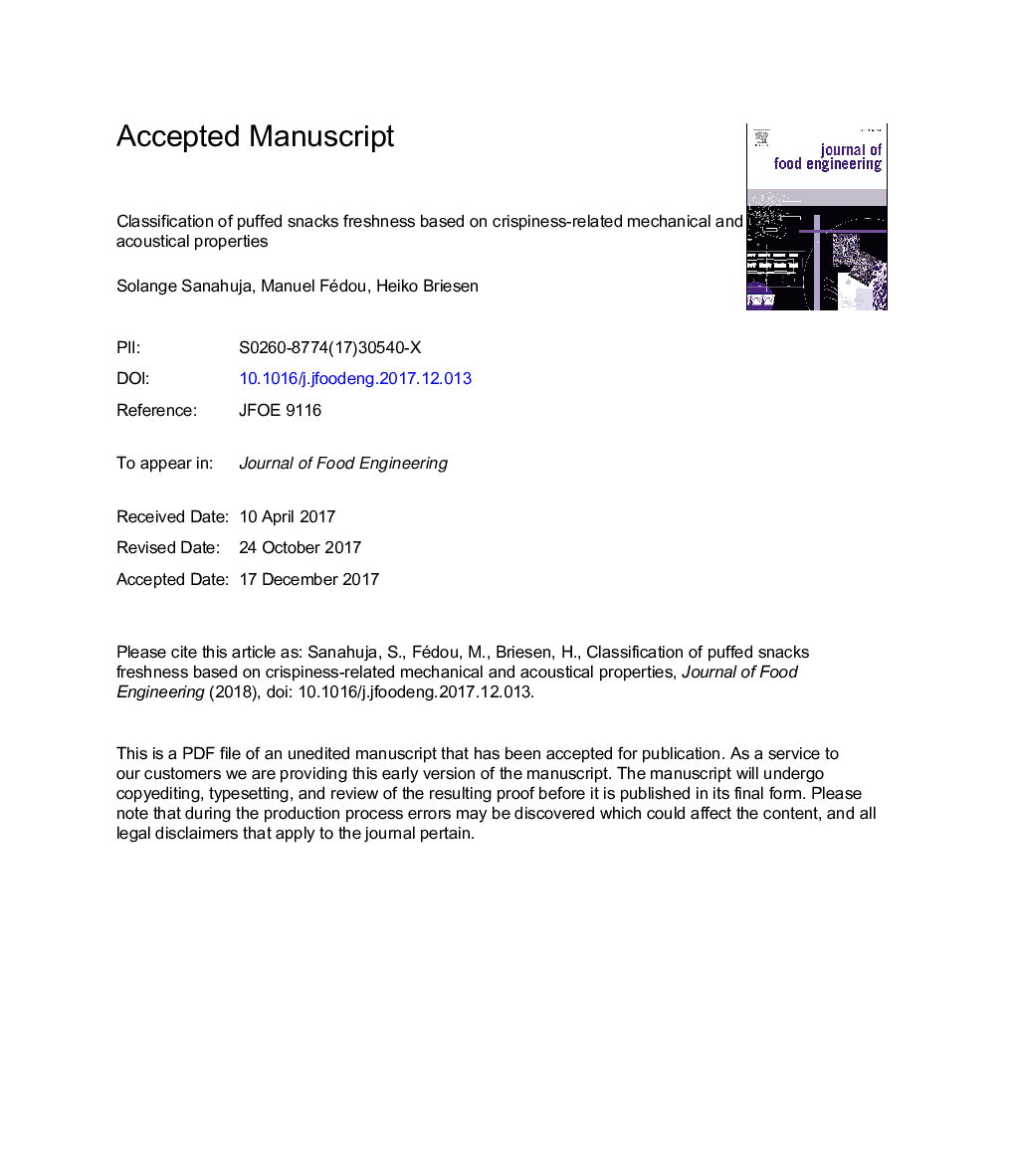| Article ID | Journal | Published Year | Pages | File Type |
|---|---|---|---|---|
| 6664637 | Journal of Food Engineering | 2018 | 45 Pages |
Abstract
The use of instrumental methods to support sensory panels in the routine quality control of crispiness remains challenging. Texture analysis is often insufficient to accurately classify this complex sensory attribute. Herein, 70 different food properties were combined via machine learning algorithms to mimic multisensory integration. Force and sound were measured during crushing of puffed snacks equilibrated at different humidity levels. Sensory panels then ranked crispiness-related freshness and preference based on the recorded sounds. Selected feature combinations were used to train machine learning models to recognize the freshness levels at different humidity levels. The classification accuracy was improved compared with traditional texture analysis techniques; an accuracy of up to 92% could be achieved with quadratic support vector machine or artificial neural network algorithms. Moreover, third-octave frequency bands, characterizing breakage frequencies and sound pitches, were determined to be main descriptors to be taken into account during the research and development of puffed snacks.
Related Topics
Physical Sciences and Engineering
Chemical Engineering
Chemical Engineering (General)
Authors
Solange Sanahuja, Manuel Fédou, Heiko Briesen,
